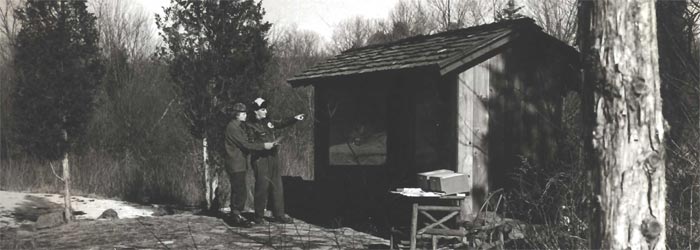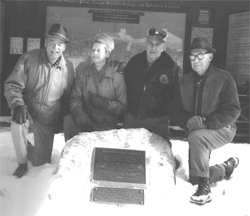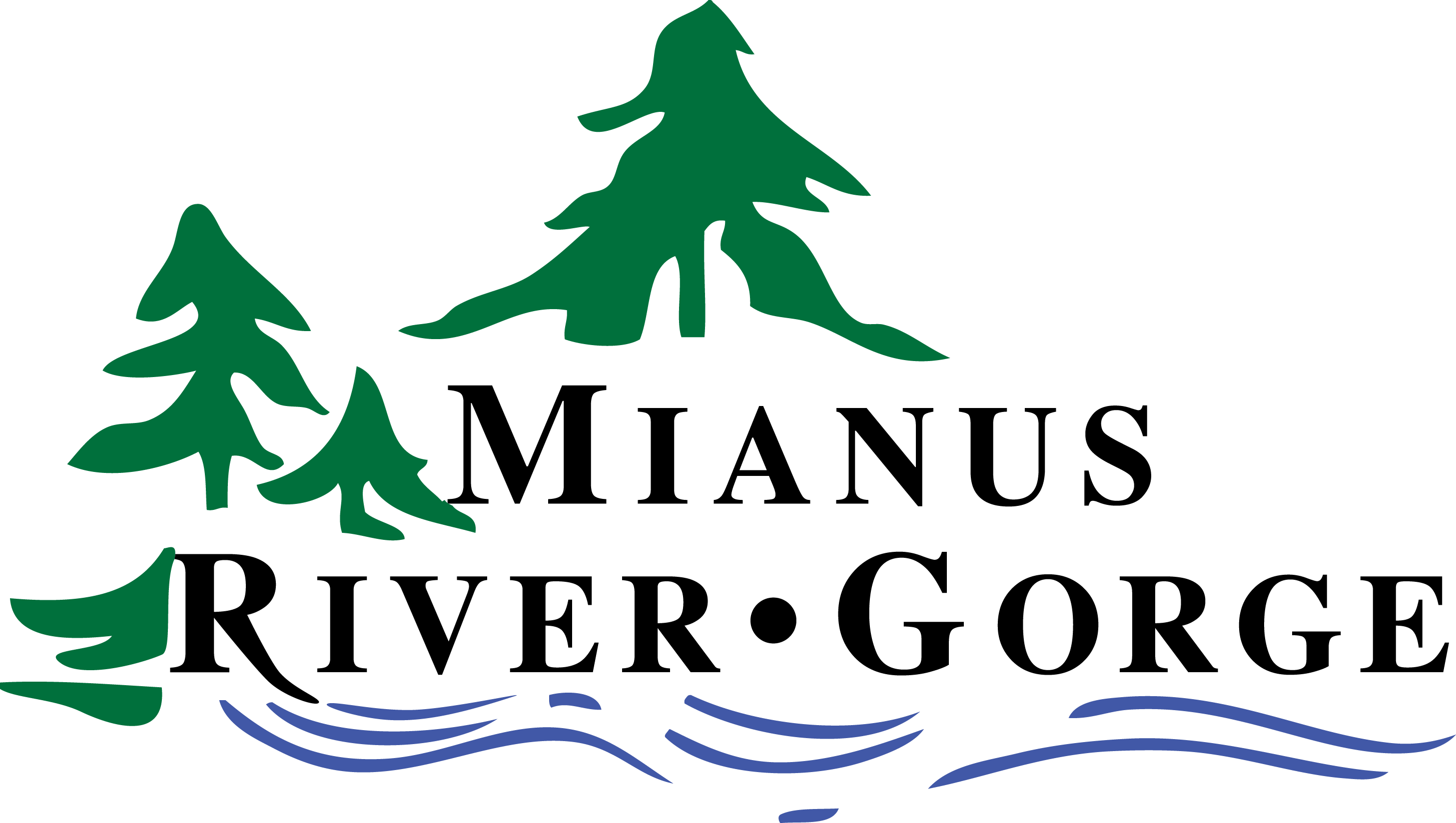

In the early 1950’s a group of concerned citizens led by Gloria Hollister Anable discovered in the Mianus River Valley a wild and free river running through a primeval forest, a natural area which had taken hundreds of years to create. They realized this was no ordinary forest. With development threatening to destroy this irreplaceable resource, they banded together to form the Mianus River Gorge Conservation Group and started the process of protecting this natural treasure.
Four of the five MRGP founders in December 1969: Jim Todd, Gloria Anable, Tony Anable and Bob Hamershlag (Edna Edgerton not pictured).
Realizing they needed confirmation that the Gorge was worthy of protection, the founders enlisted the help of several professional scientists and walked the Gorge in December of 1953. “It was, the professionals agreed, an outdoor schoolroom, a sanctuary, a museum and a place of abiding beauty.” This important moment in our history has come to be known as “The Long Walk.”
In the fall of 1953 a keen-eyed member of the founding group read in the local paper that the Greenwich Water Company was requesting permission to erect a dam on the Mianus that would have flooded the area that is now the Gorge. Immediate public reaction by the Gorge Committee at the public meeting in spring of 1954 led to a compromise. The Water Company would build the dam, but reduce the height of the dam from 275 to 257 feet, thus saving the Gorge and its 300-year old hemlock forest.
Land Is Acquired
Christmas Eve 1953, the Anables were decorating their Christmas tree when they received a letter from a friendly neighbor alerting them that 60 acres of old-growth forest deep in the heart of the Gorge was due to be sold for a housing development. To protect this land and its ancient hemlocks, the committee needed to match the developer’s offer by January 1, 1954. Needless to say, the Christmas tree never got decorated that year. Committee members rallied their troops, pooled their resources (including three personal life insurance policies) and raised the down payment by 8:00am. January 1. The remaining money of the $30, 000 purchase price was raised in the community and from the then fledgling organization –The Nature Conservancy — which loaned the money to the Gorge, thus establishing the very successful revolving Fund.
First Land Project of the Nature Conservancy and First National Natural History Landmark
Faced with raising substantial funds for land purchases, including those for the first 68 acres, the Mianus River Gorge Committee established an affiliation with the Nature Conservancy so that contributions to the Preserve could be tax-deductible. Donations of funds and land would be made to the Nature Conservancy for the Mianus River Gorge Preserve. In 1990 the Mianus River Gorge Preserve became a separate not-for-profit organization.
In 1964, Mianus River Gorge was designated the first National Natural History Landmark in the United States by the U.S. Department of the Interior. The Mianus River Gorge was noted for its “excellent climax hemlock forest and its piedmont physiography and geomorphology.”
Expanding to Protect the Watershed
Realizing that the Mianus River Gorge Preserve was increasingly impacted by development throughout the watershed, the staff and trustees expanded the organization’s protection efforts in the mid 1980’s to include lands hydrologically connected to the river. Through the support of donors and the work of staff and trustees, MRGP is now comprised of nearly 900 acres, with roughly 200 acres under conservation easements. A top priority for MRGP continues to be protecting land and water resources throughout the Mianus River Watershed.
Science-Based Land Management and Education
MRGP’s early founders were conservationists and natural scientists who recognized the unique value of our old-growth hemlock forest and its tremendous biodiversity. They believed that understanding how humans impact natural systems was crucial to the effective management of our resources. Under Gloria Anable’s leadership MRGP began surveying and categorizing our natural inventory to lay the groundwork for study and preservation. Today, we continue her work through innovative research-based education programs for high-school, undergraduate and graduate students aimed at developing forward-looking resource management strategies.
